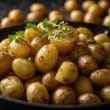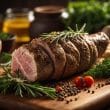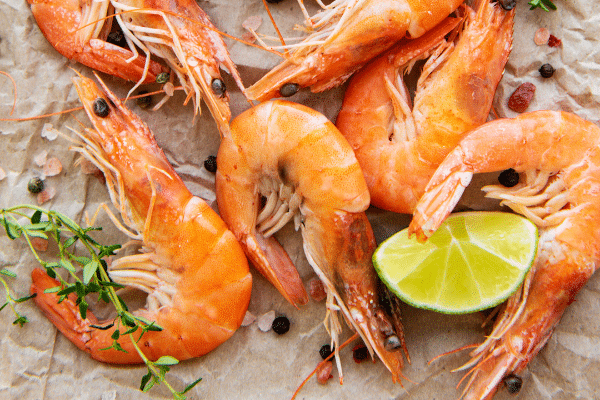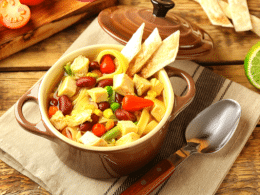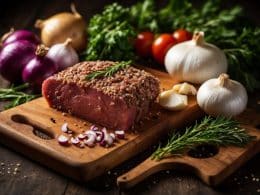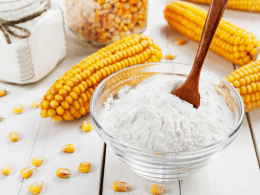Shrimp is a versatile food. You can cook it in various ways with various seasonings.
Depending on the dish, shrimp shells are usually removed before cooking. But it’s not rare to see shrimp cooked with shells, especially in grilling.
Can you eat shrimp shells?
Yes, you can eat shrimp shells! It’s an edible part of shrimp that is crunchy and tasty. The texture is great for certain dishes such as grilled shrimp, but when it comes to shrimp soup or soft curry, you might want to remove the shells.
Shrimp shells are crunchy and crispy, especially when it’s grilled. If you decide to leave on the Shrimp Tails, they can look fantastic on that BBQ!
What Is Shrimp Shell?
Shrimp shell is the outer part of the shrimp which looks transparent and has a texture of a scale.
According to a study, shrimp shell contains protein, calcium carbonate, and Chitin a good source of insoluble fiber.
It’s a common to de-shell shrimps before cooking or right after eating it and just throw it away.
The de-shelling of Shrimp, unfortunately, generates a lot of waste. Also known as Shrimp Shells Waste (SSW) so much is now generated, that there are scientists actively working on trying to find the solution to manage the waste.
Now, when you look at a cooked shrimp with shells on, you might have a sense that the shell is either thick, crusty, or non-edible, am I right?
And this might lead you to the actual question, can you eat shrimp shells?
Can You Eat Shrimp Shells?
Yes, you can eat shrimp shells.
Shrimp looks gorgeous and tastes so good when cooked perfectly. When you look at the outer shells, you might just consider it as a barrier to the softness of the meat, am I right?
But actually, you can get the most out of the shrimp by eating the whole of it. Yes, including the head, shell, and tail!
Eating shrimp with shells on is time-saving and it produces less waste.
You can save both of your time and the chef’s time because none of you should de-shell the shrimp.
Because let’s admit it, removing the shells from the shrimp, be it before or after cooking, can be a little annoying, right? Especially when you’re trying to remove it with a fork and spoon.
Next time you get a dish with shell-on shrimps, remember that you can eat it without removing any of its shells.
P.S. Although possible, eating big-sized shrimps with shells on is not recommended if you just try it for the first time because shrimp shells aren’t soft and you might have difficulty in chewing it if the shrimp is too big.
What Does Shrimp Shells Taste Like?
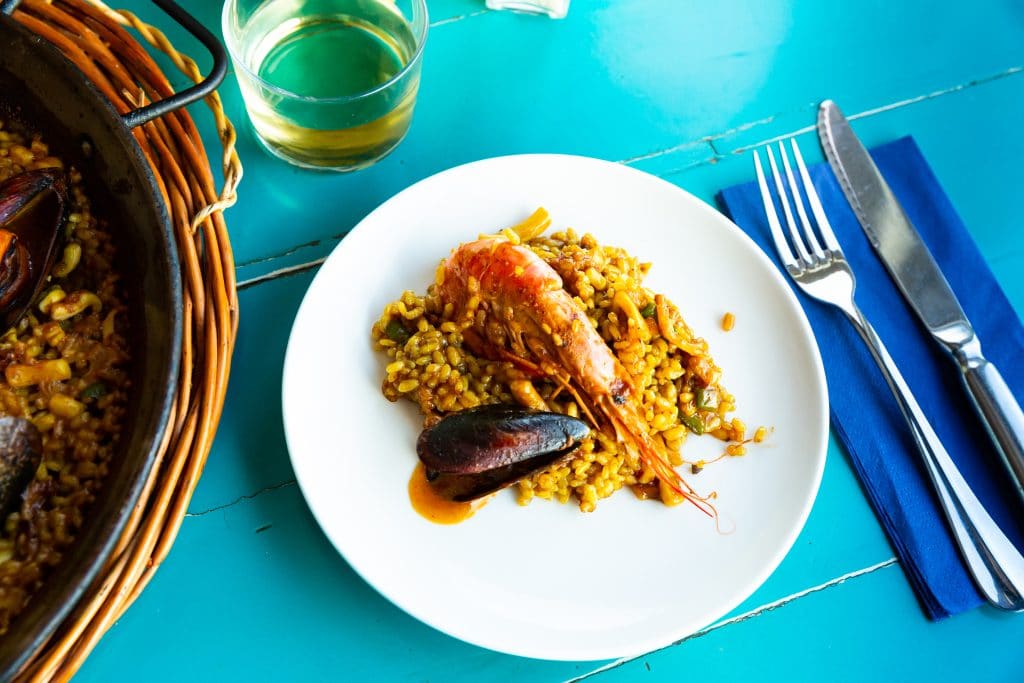
Shrimp shells have a crunchy and crusty texture and taste briny, but not in an unpleasant way.
If you eat it by itself, it might be a bit unpleasant to chew and swallow.
But if you eaten together with the shrimp meat, without removing anything, you can taste the combination of soft meat, crusty shell, and savory flavor all together inside your mouth.
Chewing them all together is more adventurous compared to eating the meat alone. Imagine a crunchy bite on the outside meets soft, savory meat inside.
Is Eating Shrimp Shells Dangerous?
Despite being commonly asked “is it not bad to eat shirmp shells” – the clear answer is no. Cooked shrimp shells aren’t toxic nor dangerous for health. Shrimp shells are edible and contain protein which is beneficial for our body.
However, they can be quite sharp, so be careful when you swallow!
Should You Remove The Shrimp Shells Before Cooking?
It depends on the type of dish.
The way you cook the shrimp will affect the way you eat it later. So, if you’re wondering whether you should remove the shells or not, try to understand the dish, and if it makes sense.
For example the seafood platter below is finger-food and it absolutely makes sense to keep the Shirmp in their shells, if not just for the pleasing aesthetics.
Are they going to use their bare hand? Are they going to use a spoon and enjoy it with some broth? If the answer is yes, then keep them on.
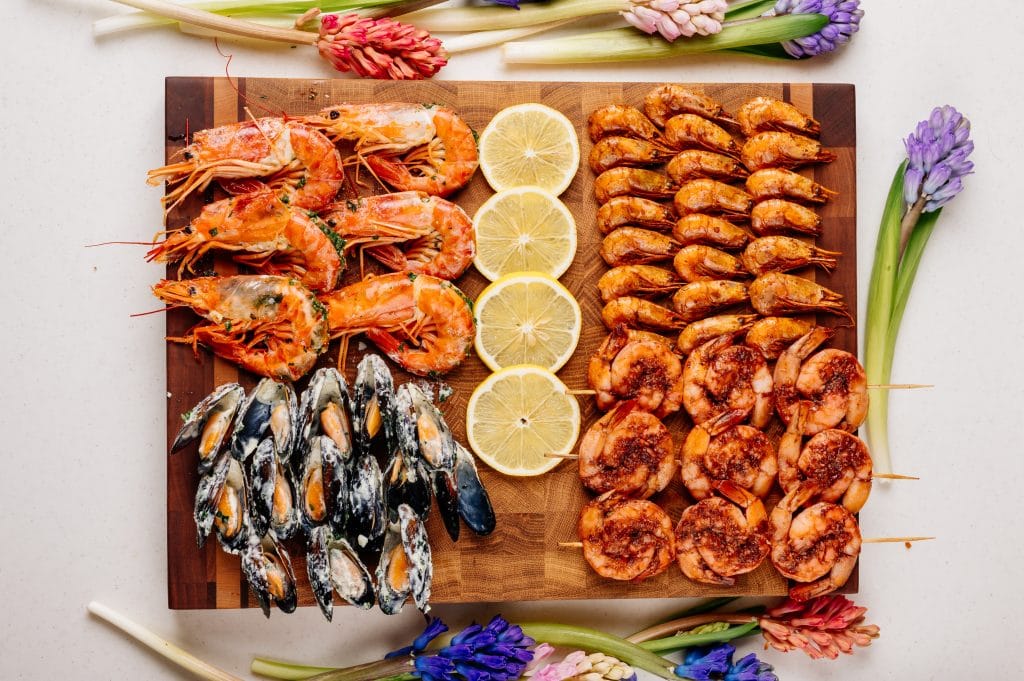
If you are grilling shrimp or roast the shrimp, you don’t need to remove it. In fact, including the shells for cooking can add extra crunch to the overall dish, just be sure to ensure the safe internal temperature – 120 degrees Fahrenheit (120°F).
But when it comes to soft, creamy pasta dishes, or watery dishes such as soup or curry, the shrimps can be nicely enjoyed without shells. Soup and curry are eaten using a spoon. And the type of dish is “gentle”. So, removing the shells before you cook shrimp is a good idea.
Now if the shrimp is sauteed or pan-fried (without flour). It’s also a good idea to remove the shells. But consider the preference of your family members. If they love crusty things and don’t mind eating the whole shrimp, you can just leave the shells on.
Remember, whether you decide to de-shell the shrimp or not, always de-vein to clean before cooking shrimp.
What About Shrimp Tails?
Some people love eating shrimp tails, while some others don’t.
If you want to eat shrimp tails together with the meat, keep the tail intact and try to roast or grill them. The high heat will make the tail becomes crispy on the outside while the inside stays soft.
But if you want to remove it, that’s also fine.
Should I eat Shrimp Heads?
Eating shrimp heads is a personal preference. Some people love the taste of the brains, while others find it too fishy. – it’s a hard pass from me, light brown goo, an unpleasant texture and the rich flavor profile is just too much.
Is Eating Shrimp Shells, Tails and Heads Healthy?
Yes, shrimp shells, tails, and heads are all healthy and nutritious. They are a good source of protein and calcium.
Eating shrimp shells can also help you get more omega-3 fatty acids, which are good for your heart health.
Health Benefits
There are a number of health benefits:
- Provides a good source of essential amino acids our bodies need.
- A great source of omega-3 fatty acids, which are beneficial for heart health.
- A good source of protein and calcium.
- A fairly low calorie food, just go easy on the garlic butter and deep frying!
Health Concerns
While there are many health benefits to eating shrimp, there are also some potential health concerns.
Shrimp can be high in cholesterol and sodium.
Eating too much shrimp can increase your risk of heart disease and stroke.
If you have diabetes, you should be especially careful about eating shrimp because it can raise your blood sugar levels.


